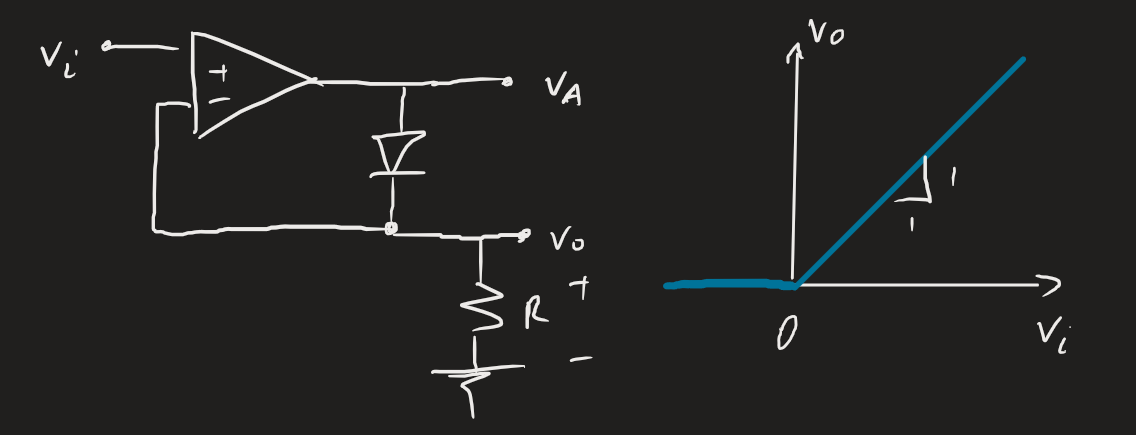The superdiode is a precision half-wave rectifier circuit, used when the input signal is smaller than the voltage drop of a conducting diode (0.7 V). It’s meant to act as a “perfect diode” using an operational amplifier, where:
 Regular rectifiers work well when , i.e., to get a significant we need a significant . Certain applications require very small input signals, so we use op amps to tune the transfer characteristics in a more precise way.
Regular rectifiers work well when , i.e., to get a significant we need a significant . Certain applications require very small input signals, so we use op amps to tune the transfer characteristics in a more precise way.
What’s going on here? When is negative, the op amp output will also go negative, reverse-biasing the diode, leaving open loop configuration. No current will flow through the resistor, so in this case. only needs to exceed a very small amount for the op amp to output something. This results in a negative feedback loop and the current will flow from to ground, causing a voltage that essentially follows the input.
This is contrasted from a voltage follower circuit in that it only follows for positive .